2011 Yamaha Phazer GT Review

Full-featured Phazer GT exudes value
If you’re looking for significant changes in the latest edition of Yamaha’s econo-trail sportster, the 2011 Phazer GT, don’t bother. This is a year of evolution. So, while Yamaha may not have hit a sales home run with this latest version in the Phazer family tree, it is a solid value-leader and worthy of bearing the Phazer nomenclature.
Engine Type:Parallel Twin
Cylinders:2
Engine Stroke:4-Stroke
Valve Configuration:OHV
Displacement:499 / 30.4
Starter:Electric
Turbocharged:No
View Full SpecAs Yamaha enthusiasts know, this snowmobile manufacturer tends to do things its own way, not necessarily following the crowd. Where others kept updating two-stroke engines to meet US emissions and other government regulations, Yamaha committed to four-stroke powerplants early on. According to Yamaha internal spokesmen, the current line of four-stroke sleds meets or exceeds all existing regs. Plus, Yamaha four-strokes have earned a reputation as being extremely durable, reliable and very strong performers. It doesn’t hurt that Yamaha four-stroke powered sleds also hold their resale value better than just about any other sled on the market.
When it comes to the current 2011 Phazer GT, you’ll find a very interesting package that is unique in snowmobiling. The 499cc Genesis twin sits tucked away where access to it requires removing body panels and makes it quite unfriendly for traditional tinkering. That’s pretty much what Yamaha engineers intended. Plus, what can you do? You can access the YVRC variable ratio drive clutch to change a belt — assuming that this sled will actually blow one. That’s unlikely thanks to modern drive belt design and materials. As for anything else, since the twin cylinder, four-stroke is dead-on reliable and features a modern, sophisticated fuel injection intake system with factory programmed mapping, there is virtually no on-trail maintenance required.
Like the high revving Genesis motor in the latest Apex series, the Phazer twin also revs high. It, too, required a gear reduction drive that Yamaha engineers use to slow down the output revs to aid clutch tuning and livability. The engine on its own can easily rev over 10,000 rpm, but clutching wants to be held around 8000 rpm.
As you know, engines make power through displacement and/or engine revs. At 499cc, the Phazer Genesis is the smallest of Yamaha’s four-stroke applications, but its 12,000-rpm potential helps give it horsepower, which it uses to scorch Ski-Doo’s new 600 ACE four-stroker on top end. The Genesis twin will put out about 80 horsepower to the slightly larger displacement Ski-Doo Rotax 600 ACE’s 60-ish. Of course, we doubt you’ll get 20-plus miles per gallon out of the high-revving Phazer twin, so the Rotax has that advantage.
At this point the only serious “clean” engine comparable to the Phazer Genesis would be Ski-Doo’s Rotax-built ACE. Polaris’ normally aspirated 750cc four-stroke twin has similar power from 50 percent larger displacement but there’s quite a substantial engineering difference. The Polaris four-stroke is more commercial grade than performance grade and is extremely limited in the Polaris model line. There is no head-to-head four-stroke match up of consequence among the Polaris or Arctic Cat models.
When it comes to solo trail sport riding, the Phazer GT seems unique. It was designed as a relatively low buck entry into the sport. Of course, the Phazer has found a following with some snowmobilers that have opted to buy a pair. Heck, looking at its US$8,299 price tag, you can own two Phazer GTs for about the price of the popular top-of-the-line 2011 Apex SE. The combined Phazer GT two-pack would give a similar 160-hp output to the Apex SE’s dyno-tested 162.8-hp four-stroke, four-cylinder lightweight powerplant. For the record, the Phazer two-pack would be US$1,649 more expensive than the Apex SE.
Like the Apex, the Phazer GT is a fully-equipped sled. It features a long-travel front suspension that moves 8.4 inches to easily absorb trail chatter as well as making rutted runs fun. The double A-arm design is similar in concept to the Apex design and the Phazer also uses slick running plastic skis. The rear suspension delivers up to 16-inches of travel, which is controlled via a set of KYB gas shocks. The front suspension allows you to fine tune compression and rebound action thanks to the use of 40mm GYT dual-clicker gas-charged shocks.
Although the Phazer GT top speed will never reach Apex levels, the braking system is conceptually similar with hydraulic action working on a ventilated disc. A tap of the brake lever will be about all you’ll need to control speed into a turn, as the drive system offers engine braking as soon as you lift off the throttle.
Yamaha offers various versions of all its platforms. You’ll find the Phazer comes in two trail offerings. The GT is for groomed trail sport riding, while the Phazer RTX is aimed at riders seeking the challenge of more moguls and rougher trails. The Venture Lite stretch chassis model with a 15-inch wide track has been designed to haul two riders. There also is a stretch track Phazer MTX with a 144-inch track with two-inch lug profile for powder riders. The trail Phazers utilize a 14-inch by 121-inch track.
The strength of the Phazer GT comes from its unique styling, ultra-reliable power package, light weight design and feature-laden value. For the price, the Phazer GT offers electric start, premium-grade shock package, reverse, tall-ish windshield and totally Yamaha engineering.
Unique, reliable, light, nimble and exceedingly well-engineered, the Phazer GT at US$8,299 has to be considered an exceptional value in today’s snowmobile economy.
| 2011 Yamaha Phazer GT Specs | |
| Engine | Yamaha Genesis 80FI; 499cc, 2-cylinder, 4-stroke, liquid-cooled; 43mm Keihin throttle body electronically controlled fuel injection |
| Horsepower | 80 |
| Drive | Yamaha YVRC variable ratio; gear-reduction |
| Front Suspension | Yamaha double wishbone; 8.4-in travel; 40mm GYTR dual-clicker high pressure gas shocks |
| Rear Suspension | Yamaha parallel rail, 16.0-in travel; C36 KYB high pressure gas shocks |
| Length | 111.0 in |
| Height | 52.7 in |
| Width | 47.8 in |
| Ski Stance | 42.7 in |
| Track | 14 x 121 x 1.0 Camoplast Hacksaw |
| Weight | 489 lbs. |
| Fuel Capacity | 7.0 US Gal |
| MSRP | $8,299 |
Related Reading
2011 Yamaha Phazer RTX Review
2011 Yamaha RS Vector GT Review
2010 Yamaha Apex GT Review
All Things Yamaha on Snowmobile.com



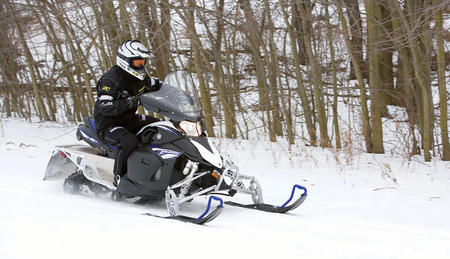
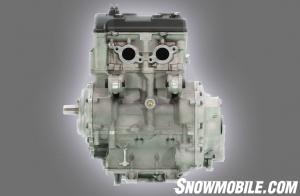
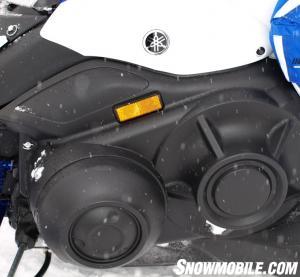
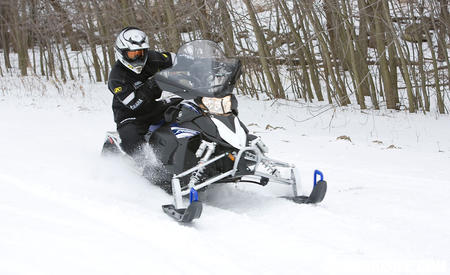
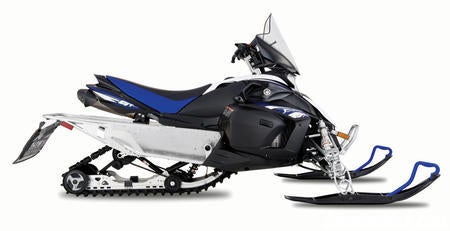
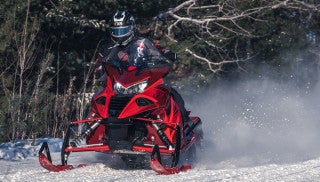




 Your Privacy Choices
Your Privacy Choices